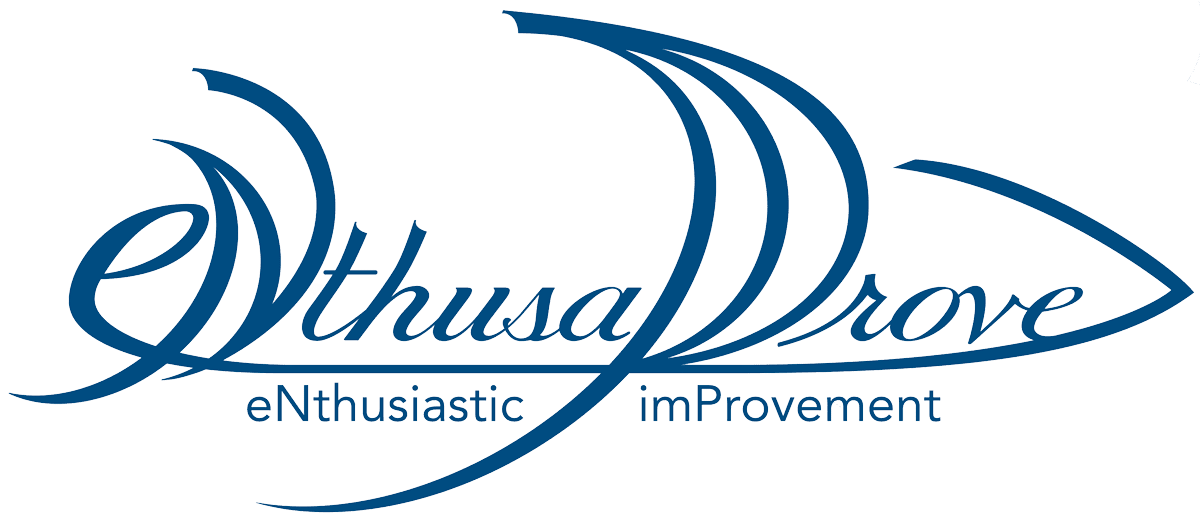
“I don’t need to be facilitated!”
We’ve heard that line over the years, and each time it gives us a bit of a chuckle even though we find it sad that some folks think that people are ‘facilitated.’ Well, that is not the case. However, hearing that statement highlights that frequently team leaders are at a loss to explain what sort of facilitator they need and what exactly to expect a facilitator to do. Here are some ways to think about that.
First, let’s get something straight. Facilitators don’t facilitate people. The word ‘facilitate’ means to make easy. Facilitators don’t make people easy. (if that were true, we’d have a way cooler name than ‘facilitator’!)
The job of a facilitator is to ‘make easier’ a process that would normally be difficult.
Caveat: eNthusaProve provides facilitating services. We write this blog as a way to help people who face situations where they wonder if facilitating would help.
What sort of processes are we talking about?
We’d like to suggest you think of processes like this:
DIALOGUE – where the issue at hand needs some learning. Typical cases are improving a process, finding a new product, discovering causal factors, strategic visioning
DISCUSSION – where the issue at hands needs an agreed upon decision. Typical cases are strategic planning, implementation planning, selecting a course of action from several choices, deciding on which idea to run with,
ALIGNMENT– where the issue at hand needs not just learning and decision, but a dose of belief and buy-in. Typical cases are when there is misunderstanding, mistrust, miscommunication. Where organizational silo thinking supersedes overall organizational vision and mission thinking.
Notice that these are most often group processes. But actually, tasks like strategic visioning and discovering causal factors might be the task of a single person, and, there are times when having an independent voice facilitate these processes is very useful. I have frequently ‘facilitated’ strategic visioning with a leader prior to her or his doing the same with their team. A need for a facilitator is not group size driven, it’s content and need driven. Granted, having more people usually increases the difficulty of dialogue, or discussion or alignment…so it’s more likely a facilitator will be helpful.
What sort of facilitator do you need?
DIALOGUE (We need new ideas! A new solution! A new vision!)
 Facilitating a dialogue is like orchestrating a jam session. At first, it sounds cacaphonic…no semblance of melody or rhythm. The group is experimenting with ideas, is searching for something they haven’t found before, is challenging long held assumptions to see if they still apply. This requires a facilitator who is adept at adding just enough structure to allow the conversation to build and be somewhat recorded. It’s like that science experiment where we’d dissolve sugar in water and then put a string in and watch crystals grow on the string. The group conversation is the sugar water; the facilitator is the string provider to allow shape to grow from ideas that are elusively dissolved. Or, returning to our music metaphor, it’s like gently orchestrating what sort of music can be evolved from what sounded like noise.
Facilitating a dialogue is like orchestrating a jam session. At first, it sounds cacaphonic…no semblance of melody or rhythm. The group is experimenting with ideas, is searching for something they haven’t found before, is challenging long held assumptions to see if they still apply. This requires a facilitator who is adept at adding just enough structure to allow the conversation to build and be somewhat recorded. It’s like that science experiment where we’d dissolve sugar in water and then put a string in and watch crystals grow on the string. The group conversation is the sugar water; the facilitator is the string provider to allow shape to grow from ideas that are elusively dissolved. Or, returning to our music metaphor, it’s like gently orchestrating what sort of music can be evolved from what sounded like noise.
A good dialogue facilitator will be extremely flexible and patient, will need to be an energizer to keep the conversation going yet also keep pointing out where seemingly disparate or radical ideas may have value. The dialogue facilitator should be adept with tools to help develop that shape, tools like mind mapping, flow charting, picture making, nominal group technique, and even that overused and misused tool, brainstorming.
DISCUSSION (We need a good decision! A decision we can all be accountable to!)
 Facilitating a discussion is like running a courtroom, with the facilitator being judge, defense attorney and prosecuting attorney all in one, with the group being the plaintiffs, the defendants, the witnesses, the jury and the gallery all in one. The goal is to arrive at a decision after weighing the evidence, considering the context, evaluating against the tradition and culture (law) and listening to what needs to be listened to. In the end, the team arrives at a decision that withstands scrutiny.
Facilitating a discussion is like running a courtroom, with the facilitator being judge, defense attorney and prosecuting attorney all in one, with the group being the plaintiffs, the defendants, the witnesses, the jury and the gallery all in one. The goal is to arrive at a decision after weighing the evidence, considering the context, evaluating against the tradition and culture (law) and listening to what needs to be listened to. In the end, the team arrives at a decision that withstands scrutiny.
A good discussion facilitator will need to keep in perspective opinons expressed strongly and help build voice for opinions expressed timidly. A good facilitator will have tools to help the team develop that decision, tools like RACI charts, flow mapping, PICK charts, decision trees, force fields, and the like.
ALIGNMENT (We need to get along! We need to get aligned! We need to build trust!)
Facilitating an alignment is like a coach getting a group of unruly high school kids who have come off a losing season to start believing in themselves, in winning, and in the steps that it will take to get there. It’s a constant process of re-establishing common ground. It’s a process of continually re-connecting the team to each other and the team purpose. It’s about re-establishing trust, rebuilding bridges, and restoring confidence.
A good alignment facilitator will have tools to help accomplish these elements of alignment. (These are the same tools that help the leader do what a leader needs to do.) So if the facilitator runs a Myers Briggs or Strengths type of event, it is ultimately giving the members, but most importantly, the leader, insight on how trust, or bridging, or confidence can be built. This is why it is critical for a facilitator who is helping the team to come together to make sure that when he or she is recommending a particular event, they also help the leader to see why this event will help to accomplish the team building or alignment that the leader needs for the team.
Many times, you need all three of these purposes. It is our job as facilitators to make sure we distinguish between those purposes, plan accordingly and have the tools ready as we need them. A good facilitator will keep the team leader appraised of why he/she is recommending certain approaches or tools.
Many times you will want to have a facilitator because there are some, as I have heard many clients call them, “tough personalities.” Well guess what. There are always personalities, and each of us are ‘tough’ in one way or another. Some of us are tough to keep quiet and some are tough to express our opinion.. and the list goes on. While we don’t ‘facilitate people’, good facilitators should know when the process needs some personally applied approaches to keep the trust level high and the negative emotions low.
In general, facilitators come in handy whenever the doer or doers struggle to do a difficult process on their own. This is common. For example: Teams that have a ton of experience struggle with envisioning new ideas and challenging the status quo. Teams that are great with ‘gettin ‘er done’ want to hurry to any answer and struggle to take the time on dialogue based learning. Teams that feel disempowered struggle to find a way to turn ideas into decisions and actionable plans. Teams that have a mix of folks who have rarely operated under one flag struggle with aligning on a common vision.
It’s never a case of facilitating people. It’s always about recognizing that teams often have tough work, which is why it’s a team that is needed. And while the team usually knows what they need to do, i.e. generate ideas or agree on a plan or build an interdependent strategy, they frequently struggle to know ‘how’ to do that, which tools will help them. This struggle with knowing facilitating tools turns to frustration when the conversation gets intense. That’s where facilitators are handy.
Next time you’re thinking, “I don’t need to be facilitated”, think process, not people.





